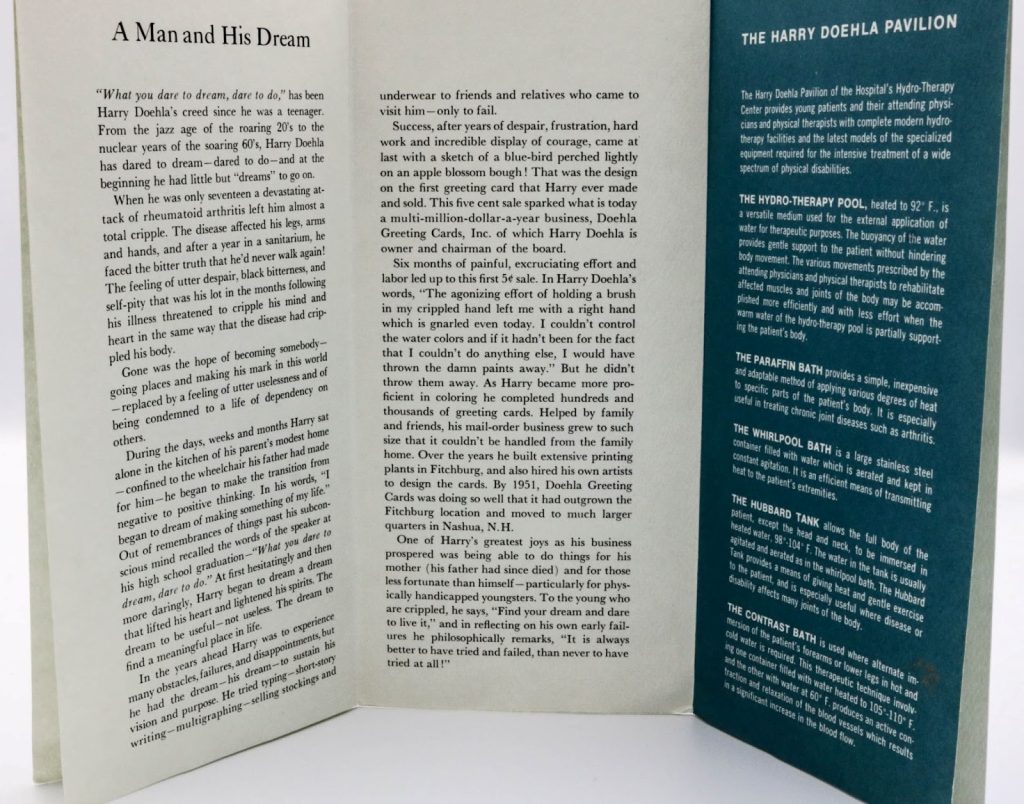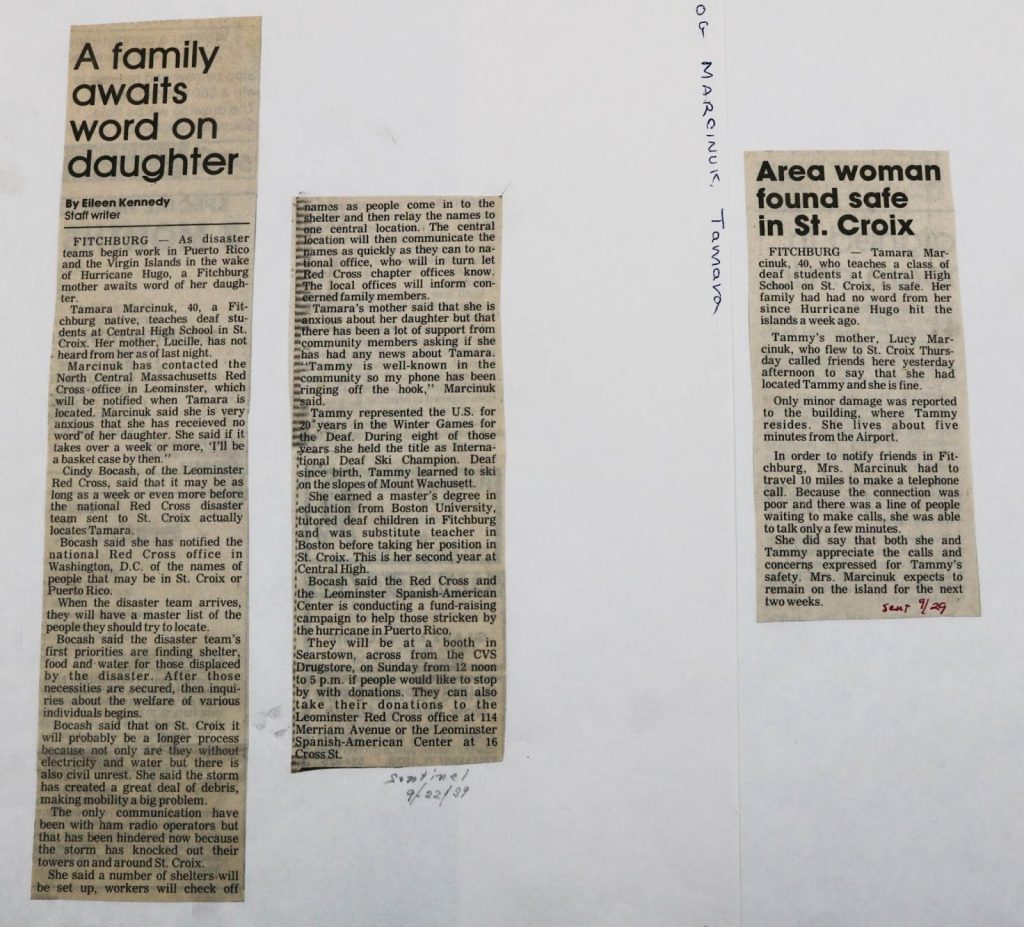Part 7: Three Examples of Disability Heritage
Learning Objectives
By the end of this section, you will be able to:
- identify disability heritages artifacts.
- articulate why an artifact could be disability heritage and what it could reveal about disability.
Activity 3.7
- Look closely at each of these artifacts.
- Think carefully about the previous discussion of disability heritage
- Consider the context of each of these artifacts. Please look up information as needed.
- Decide what aspects of each one should be considered disability heritage and why they might be important.
- Assign each artifact one or more types of cultural heritage: tangible, intangible, natural, emerging, marginalized.
Food for Thought: Activity 3.7 Artifacts
After reading the following notes and questions to consider, determine if you change your decision about why each disability artifact is heritage, its importance, and what type of cultural heritage it is.

In a Student’s Own Words
Excerpt of “News Article: ‘Mettlesome Maid from Fitchburg – Tammy Marcinuk Surmounts a Handicap’”
by Jillian Garreffi, Student, Fitchburg State University
It is very unfortunate that Tammy [Marcinuk] was never brought into the same light as champions in the Olympics because she certainly deserved it. Many people in this world underestimate the abilities and capabilities of people with disabilities, whether it be physical or intellectual. The Special Olympics, Paralympics, and Deaflympics are all ways that we have tried to include people with disabilities in showing and representing what they can do. However, there has been much talk about if these events specifically for people with disabilities bring more attention to the person’s disability rather than their ability. Some people are happy with this separation, but others think that the individuals who are just as good as the elite competitors in the actual Olympics are just being held back from being recognized. Tammy and other countless amounts of people with disabilities will never be recognized to the extent that they should be because events like the Deaflympics never reach the front pages. Personally, I think this is very unfair, and Tammy deserved to get the recognition she deserved for being an incredible athlete and winning five gold medals in six international Deaflympic Games starting in 1967. In my opinion, people should not have to feel singled out because they have a limitation or disability. Tammy was completely capable of competing in the Olympics and taking home the gold.

Excerpt of “News Article: ‘Hugo Devastates – A family awaits word on daughter’”
by Jeanie Djokotoe, Student, Fitchburg State University
Tammy [Marcinuk] won nine medals in total: “five gold, one silver and three bronze” (“In Memoriam: Tammy Marcinuk”), but also had a masters degree in elementary education from Boston University. She had gone to teach deaf students in St. Croix, Puerto Rico, when Hurricane Hugo went through in 1989. After Hurricane Hugo’s aftermath, many had no contact with their loved ones in that area, and Tammy’s mother Lucille was no exception as she waited to hear word on her daughter. No one knew Tammy’s whereabouts, even though she was well-known in the area. Tammy’s disability could have been the reason she was not found sooner as she was unable to hear the calls and announcements being used to locate missing persons. Luckily, the disaster team was eventually able to locate her in Puerto Rico, but this is just an example of how natural disasters have a huge impact on the disability community.
People with disabilities, especially physical disabilities, can have a hard time adjusting when a natural disaster occurs or when it is necessary for evacuation. It can be very time consuming and difficult for those with certain disabilities to be able to flee before disaster strikes, leaving them much more vulnerable: “If the international community’s desire is to protect the population from disaster risks, during these discussions, greater attention must be paid to persons living with a disability” (Walbaum). With that being said, the disabled communities are not always informed about the events that occur in the world, which is greatly in part due to information being inaccessible to those with visual, hearing, and/or movement impairments. Another factor could be how easily they are able to prepare themselves in light of a storm or event. If they’re unable to obtain supplies that could help them, or receive assistance from others, it will leave them more vulnerable and less likely to survive either the event itself or the aftermath. This is a reason why some members of the disabled community lean towards non-profit organizations and faith-founded organizations to get prepared for these dangerous occasions. Some of these organizations are equipped to prepare individuals with disabilities for predicted natural disasters. Even though the community should come together as a whole in the aid of those with disabilities, the responsibilities of that task have fallen on the shoulders of these non-profit and faith-based organizations.
Questions to consider:
- Do events like the Paralympics perpetuate harmful stereotypes?
- What issues do people with disabilities face?
- What do we learn about disability from this artifact?
Media Attributions
- Close-up of the inside of the pamphlet about the Harry Doehla Hydro-Therapy Pavilion, established in 1969 © Kisha G. Tracy is licensed under a CC BY-NC-SA (Attribution NonCommercial ShareAlike) license
- Fitchburg Sentinel news articles recounting how Tammy Marcinuk was missing in Puerto Rico during the aftermath of Hurricane Hugo in 1989 © Kisha G. Tracy is licensed under a CC BY-NC-SA (Attribution NonCommercial ShareAlike) license

